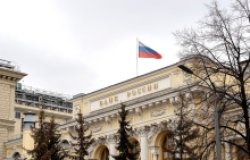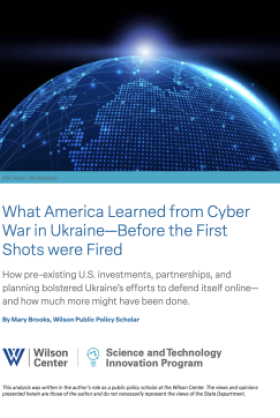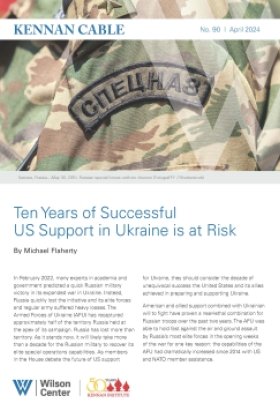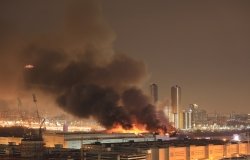The Tragedy of Ukraine's Nuclear Cities
Although the Chernobyl plant closed down, numerous other nuclear cities still exist in Ukraine, including Enerhodar, where Renata Kosc-Harmatiy has conducted research. And it's not without its problems.
The Cold War ended more than a decade ago, but this news has yet to reach remote villages, some nostalgic senior citizens, and nuclear energy towns in post-Soviet states, especially in Ukraine. Much of the social stagnation in parts of Ukraine may be linked to the type of social, political, and economic isolation found in nuclear cities.
Chernobyl is often the focus of debate when discussing the future of nuclear power, but a different predator lurks in such cities as Enerhodar on the banks of the Dnipro River a few hundred miles from the Black Sea. Its name literally means "the gift of energy," and it is. At different points in Ukraine's history, Enerhodar, which houses Europe's largest nuclear power plant, has provided up to 30 percent of Ukraine's energy needs. Yet the citizens of Enerhodar—many recruited from all over the former Soviet Union—generally are unaware of their rights, what passport they should or could hold, and whether they may reunite with their families now living abroad.
Since local authorities control the media, residents have insufficient information on, controversial social topics, and therefore have little understanding of the social ills that plague their community. In 1999, when I spent two unforgettable weeks in Enerhodar as a researcher fellow, residents told me their biggest fear was not the effects of radiation, although little protective gear was used and little radiation monitoring was done at the time. Instead, they said their biggest fears were drugs, alcohol, and their children "escaping" into the other world (such as Ukraine's capital, Kyiv).
Transportation in and out of Enerhodar is limited, salaries are pathetically low if employees get paid at all. The cafeteria food at "ZAES" (Zaporizhzhja Atomic Energy Station) is unpalatable. And as Ukrainian officials focus their attention on potential physical ailments related to Chernobyl, a social and democratic crisis looms in the nuclear cities where power reactors are still in operation.
The potential for damage to the quality of human life in Enerhodar and other nuclear cities should not be underestimated. The Orange Revolution has improved the hopes for a more democratic Ukraine in the capital, Kyiv, but I can only hope that small towns such as Enerhodar also will be its beneficiaries.
Related Program

Kennan Institute
The Kennan Institute is the premier US center for advanced research on Russia and Eurasia and the oldest and largest regional program at the Woodrow Wilson International Center for Scholars. The Kennan Institute is committed to improving American understanding of Russia, Ukraine, Central Asia, the Caucasus, and the surrounding region though research and exchange. Read more










